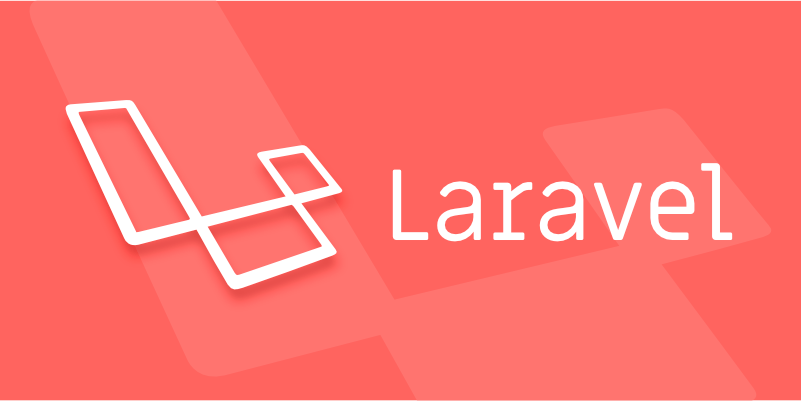DTOs in Laravel are used to organize, validate, and transfer data between application layers, improving predictability and testability. 2. Install the recommended spatie/laravel-data package via Composer for robust DTO functionality. 3. Create a DTO using the Artisan command make:data, defining data structure with type hints and optional nesting. 4. Use DTOs in controllers either via manual instantiation from validated request data or through automatic binding by implementing FromRequest. 5. Apply casting and naming mapping using attributes like WithCast and MapName to transform and normalize data. 6. DTOs can be easily converted to arrays or JSON for API responses, enhancing frontend compatibility. 7. Optionally integrate DTOs with API resources or map them directly from Eloquent models using FromModel, ensuring consistent data formatting across the app. Always keep DTOs free of business logic, use clear naming conventions, and leverage type safety to maintain clean, scalable code.

Using Data Transfer Objects (DTOs) in Laravel helps you organize, validate, and transfer data between different layers of your application—like from a request to a service or from a service to the frontend. While Laravel doesn’t include DTOs out of the box, you can implement them effectively using PHP classes, often with the help of third-party packages like spatie/data-transfer-object or livewire-ui/slim-dto.

Here’s how to use DTOs in Laravel effectively:
? 1. What is a DTO and Why Use It?
A Data Transfer Object (DTO) is a simple PHP object used to carry data. It’s especially useful when:

- You want to pass structured data between services.
- You need to normalize input from HTTP requests.
- You're working with APIs and want consistent data formatting.
- You want to enforce type safety and validation.
Instead of passing raw arrays or request objects around, DTOs make your code more predictable and easier to test.
? 2. Install a DTO Package (Recommended: spatie/laravel-data)
While you can create plain PHP classes as DTOs, using spatie/laravel-data (the modern successor to spatie/data-transfer-object) is the most robust approach in Laravel.

Install it via Composer:
composer require spatie/laravel-data
Publish the config (optional):
php artisan vendor:publish --provider="Spatie\LaravelData\LaravelDataServiceProvider"
? 3. Create a DTO
Let’s say you’re handling user creation. Run the Artisan command:
php artisan make:data UserDTO
This creates a class like:
// App/DTOs/UserDTO.php
namespace App\DTOs;
use Spatie\LaravelData\Data;
class UserDTO extends Data
{
public function __construct(
public string $name,
public string $email,
public ?string $phone = null,
) {}
}You can also use array syntax or nested data:
public function __construct(
public string $name,
public string $email,
public AddressDTO $address,
public array $roles,
)? 4. Use DTO in a Request or Controller
Option A: From a Form Request
// In your controller
use App\DTOs\UserDTO;
use Illuminate\Http\Request;
public function store(Request $request)
{
$dto = UserDTO::from($request->validated());
// Pass to service
UserService::create($dto);
return response()->json(['message' => 'User created']);
}Or better, use automatic binding with FromRequest:
// In controller method
public function store(UserDTO $dto)
{
UserService::create($dto);
return response()->json($dto);
}?? This works only if you implement
Spatie\LaravelData\FromRequeston your DTO or use proper form request mapping.
Option B: With a Form Request DTO
// app/Http/Requests/StoreUserRequest.php
public function rules()
{
return [
'name' => 'required|string|max:255',
'email' => 'required|email',
'phone' => 'nullable|string',
];
}
// In controller
public function store(StoreUserRequest $request)
{
$dto = UserDTO::from($request->validated());
// Handle logic
}? 5. Add Casting and Custom Mapping
Use data transformers and casters to format input:
use Spatie\LaravelData\Attributes\MapName;
use Spatie\LaravelData\Attributes\WithCast;
use Spatie\LaravelData\Casts\DateTimeInterfaceCast;
class UserDTO extends Data
{
public function __construct(
public string $name,
public string $email,
#[WithCast(DateTimeInterfaceCast::class, format: 'Y-m-d')]
public ?\DateTimeInterface $dob = null,
#[MapName('phone_number')]
public ?string $phone = null,
) {}
}Now it maps phone_number from JSON to phone, and formats the date.
? 6. Transform DTO to Array/JSON
DTOs are easily serializable:
$dto = UserDTO::from([
'name' => 'John Doe',
'email' => 'john@example.com'
]);
return $dto->toArray();
// or automatically JSON in response:
return response()->json($dto);? 7. Use DTOs in API Resources (Optional)
You can use DTOs alongside or instead of API resources:
return new JsonResponse(UserDTO::from($user));
Or map Eloquent models to DTOs:
UserDTO::from([
'name' => $user->name,
'email' => $user->email,
]);You can even make your DTO automatically map from a model using Spatie\LaravelData\FromModel.
? Summary: Best Practices
- ? Use spatie/laravel-data for powerful, clean DTOs.
- ? Name DTOs clearly:
UserDTO,CreateUserDTO,UserProfileDTO. - ? Use them in controllers, services, and APIs to standardize data flow.
- ? Leverage type hints, default values, and casting.
- ? Avoid putting business logic in DTOs—they should be data containers.
Using DTOs keeps your Laravel app clean, type-safe, and easier to maintain—especially as it grows. Once you start using them for forms, APIs, and service layers, you’ll wonder how you lived without them.
Basically, it's a small setup for a big win in code quality.
The above is the detailed content of How to use Data Transfer Objects (DTOs) in Laravel?. For more information, please follow other related articles on the PHP Chinese website!

Hot AI Tools

Undress AI Tool
Undress images for free

Undresser.AI Undress
AI-powered app for creating realistic nude photos

AI Clothes Remover
Online AI tool for removing clothes from photos.

Clothoff.io
AI clothes remover

Video Face Swap
Swap faces in any video effortlessly with our completely free AI face swap tool!

Hot Article

Hot Tools

Notepad++7.3.1
Easy-to-use and free code editor

SublimeText3 Chinese version
Chinese version, very easy to use

Zend Studio 13.0.1
Powerful PHP integrated development environment

Dreamweaver CS6
Visual web development tools

SublimeText3 Mac version
God-level code editing software (SublimeText3)

Hot Topics
 Creating Custom Validation Rules in a Laravel Project
Jul 04, 2025 am 01:03 AM
Creating Custom Validation Rules in a Laravel Project
Jul 04, 2025 am 01:03 AM
There are three ways to add custom validation rules in Laravel: using closures, Rule classes, and form requests. 1. Use closures to be suitable for lightweight verification, such as preventing the user name "admin"; 2. Create Rule classes (such as ValidUsernameRule) to make complex logic clearer and maintainable; 3. Integrate multiple rules in form requests and centrally manage verification logic. At the same time, you can set prompts through custom messages methods or incoming error message arrays to improve flexibility and maintainability.
 Adding multilingual support to a Laravel application
Jul 03, 2025 am 01:17 AM
Adding multilingual support to a Laravel application
Jul 03, 2025 am 01:17 AM
The core methods for Laravel applications to implement multilingual support include: setting language files, dynamic language switching, translation URL routing, and managing translation keys in Blade templates. First, organize the strings of each language in the corresponding folders (such as en, es, fr) in the /resources/lang directory, and define the translation content by returning the associative array; 2. Translate the key value through the \_\_() helper function call, and use App::setLocale() to combine session or routing parameters to realize language switching; 3. For translation URLs, paths can be defined for different languages ??through prefixed routing groups, or route alias in language files dynamically mapped; 4. Keep the translation keys concise and
 Working with pivot tables in Laravel Many-to-Many relationships
Jul 07, 2025 am 01:06 AM
Working with pivot tables in Laravel Many-to-Many relationships
Jul 07, 2025 am 01:06 AM
ToworkeffectivelywithpivottablesinLaravel,firstaccesspivotdatausingwithPivot()orwithTimestamps(),thenupdateentrieswithupdateExistingPivot(),managerelationshipsviadetach()andsync(),andusecustompivotmodelswhenneeded.1.UsewithPivot()toincludespecificcol
 Sending different types of notifications with Laravel
Jul 06, 2025 am 12:52 AM
Sending different types of notifications with Laravel
Jul 06, 2025 am 12:52 AM
Laravelprovidesacleanandflexiblewaytosendnotificationsviamultiplechannelslikeemail,SMS,in-appalerts,andpushnotifications.Youdefinenotificationchannelsinthevia()methodofanotificationclass,andimplementspecificmethodsliketoMail(),toDatabase(),ortoVonage
 Understanding and creating custom Service Providers in Laravel
Jul 03, 2025 am 01:35 AM
Understanding and creating custom Service Providers in Laravel
Jul 03, 2025 am 01:35 AM
ServiceProvider is the core mechanism used in the Laravel framework for registering services and initializing logic. You can create a custom ServiceProvider through the Artisan command; 1. The register method is used to bind services, register singletons, set aliases, etc., and other services that have not yet been loaded cannot be called; 2. The boot method runs after all services are registered and is used to register event listeners, view synthesizers, middleware and other logic that depends on other services; common uses include binding interfaces and implementations, registering Facades, loading configurations, registering command-line instructions and view components; it is recommended to centralize relevant bindings to a ServiceProvider to manage, and pay attention to registration
 Understanding Dependency Injection in Laravel?
Jul 05, 2025 am 02:01 AM
Understanding Dependency Injection in Laravel?
Jul 05, 2025 am 02:01 AM
Dependency injection automatically handles class dependencies through service containers in Laravel without manual new objects. Its core is constructor injection and method injection, such as automatically passing in the Request instance in the controller. Laravel parses dependencies through type prompts and recursively creates the required objects. The binding interface and implementation can be used by the service provider to use the bind method, or singleton to bind a singleton. When using it, you need to ensure type prompts, avoid constructor complications, use context bindings with caution, and understand automatic parsing rules. Mastering these can improve code flexibility and maintenance.
 Handling exceptions and logging errors in a Laravel application
Jul 02, 2025 pm 03:24 PM
Handling exceptions and logging errors in a Laravel application
Jul 02, 2025 pm 03:24 PM
The core methods for handling exceptions and recording errors in Laravel applications include: 1. Use the App\Exceptions\Handler class to centrally manage unhandled exceptions, and record or notify exception information through the report() method, such as sending Slack notifications; 2. Use Monolog to configure the log system, set the log level and output method in config/logging.php, and enable error and above level logs in production environment. At the same time, detailed exception information can be manually recorded in report() in combination with the context; 3. Customize the render() method to return a unified JSON format error response, improving the collaboration efficiency of the front and back end of the API. These steps are
 Strategies for optimizing Laravel application performance
Jul 09, 2025 am 03:00 AM
Strategies for optimizing Laravel application performance
Jul 09, 2025 am 03:00 AM
Laravel performance optimization can improve application efficiency through four core directions. 1. Use the cache mechanism to reduce duplicate queries, store infrequently changing data through Cache::remember() and other methods to reduce database access frequency; 2. Optimize database from the model to query statements, avoid N 1 queries, specifying field queries, adding indexes, paging processing and reading and writing separation, and reduce bottlenecks; 3. Use time-consuming operations such as email sending and file exporting to queue asynchronous processing, use Supervisor to manage workers and set up retry mechanisms; 4. Use middleware and service providers reasonably to avoid complex logic and unnecessary initialization code, and delay loading of services to improve startup efficiency.






